Tom Friedman
$45.00
| Quantity | Discount |
|---|---|
| 5 + | $33.75 |
- Description
- Additional information
Description
The work of Tom Friedman (b.1965) captures for many the essence of art at the beginning of a new century. It is modest in scale, imaginative and ecological, painstakingly crafted and ‘unheroic’. Friedman suggests a new direction in art: post video, post political/identity issues, post digital media, post ready-mades.
Friedman works in a windowless studio (more like a playground-kitchen-laboratory) in rural Massachusetts, relentlessly inventing these startling ephemeral objects ‘out of the stuff in my house’: bits of Styrofoam, packing material, bottle tops, pencil shavings, plastic straws, dental floss, spaghetti, toothpicks, bubble gum. Some of his works are too delicate to move, existing solely in photographs and, above all, in the imagination. This is art that, to quote New York Times critic Roberta Smith, ‘raises wonderful questions about the making and seeing of art’: about paying attention, about how we spend our time, and about the pleasures of small transformations producing sudden beauty.
Solo exhibitions of Friedman’s works have been held at The Museum of Modern Art in New York and at The Art Institute of Chicago. A major exhibition of his work, ‘Tom Friedman: The Epic in the Everyday’ toured in 2000-2 to the Museum of Contemporary Art in Chicago, the Yerba Buena Center for the Arts in San Francisco, the New Museum of Contemporary Art in New York and the Southeastern Center for Contemporary Art in Winston-Salem, North Carolina.
American art critic Bruce Hainley examines the artist’s work as a kind of giant self-portrait. Poet and novelist Dennis Cooper discusses with the artist such unexpected influences as contemporary electronic music. Guardian art critic Adrian Searle looks at the artist’s work Untitled, 1993: a ring of plastic cups in a home-made Minimalist tradition. The Artist’s Choices are The Dinner Party (1919) by Swiss writer Robert Walser, and the glossary to Info-Psychology (1975-6) by Timothy Leary, the cult psychologist who advocated the use of psychedelic drugs. Facsimiles of the artist’s notebooks and text works are published alongside an important interview by renowned curator Robert Storr.Bruce Hainley is a Los Angeles-based art critic and contributing editor to Artforum, Spin and Frieze. He teaches at the Graduate Fine Arts Program, Art Center College of Design, Pasadena.
Dennis Cooper, a novelist and critic, is a Contributing Editor to Artforum. He has published a number of novels, including Frisk (1991), as well as The Dream Police: Selected Poems 1969-93.
Adrian Searle is Chief Art Critic at the Guardian and a regular contributor to the El Cultural supplement of El Mundo, as well as an occasional writer of fiction. He has curated exhibitions for the Hayward Gallery, London, the Serpentine Gallery, London, and Reina Sofia, Madrid.
‘The boldest, best-executed and most far-reaching publishing project devoted to contemporary art. These books will revolutionize the way contemporary art is presented and written about.’ (Artforum)
‘A unique series of informative monographs on individual artists.’ (The Sunday Times)
‘Gives the reader the impression of a personal encounter with the artists. Apart from the writing which is lucid and illuminating, it is undoubtedly the wealth of lavish illustrations which makes looking at these books a satisfying entertainment.’ (The Art Book)
‘The combination of intelligent analysis, personal insight, useful facts and plentiful pictures is a superb format invaluable for specialists but also interesting for casual readers, it makes these books a must for the library of anyone who cares about contemporary art.’ (Time Out)
Additional information
| Dimensions | 0.75 × 10 × 11.5 in |
|---|---|
| Series | |
| Imprint | |
| Format | |
| ISBN-13 | |
| ISBN-10 | |
| Author | |
| Audience |

